|
|
|
|
.
Historic "L" Station Tour 2003
|
|
|
|
.
Historic "L" Station Tour 2003
.
The 5th Annual Historic "L" Station Tour, presented by Chicago-L.org, occurred Sunday, October 26, 2003 and was a great success. Attended by over 40 people, this was the fifth year the tour was conducted. Graham Garfield of Chicago-L.org and architectural historian John Craib-Cox, guides from the previous years' tours, returned for the fifth year to lead the tour, provide lectures, and answer participants' questions.
Each time the tour stopped at a station, a talk was given on the history of the station, its architecture, the history of the line, and other relevant information. Participants could listen to the talk or just take photos at each stop. Additional commentary and historical notes -- both about the transit system and neighborhoods it travels through -- were given over the PA system en route to each station.
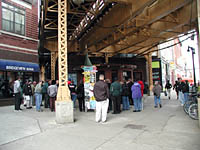 The tour group assembles in front of Damen station as guides Graham Garfield and John Craib-Cox discuss the design of the station and the neighborhood. For a larger view, click here. (Photo by Tony Coppoletta) |
The tour chartered the oldest type of cars the CTA® currently uses in revenue passenger service, a pair of 2200-series cars -- cars 2229-30 and 2267-68 -- the fourth year the tour has chartered private cars for the trip. A varying mix of stations were explored, providing examples of many different vintages, types, architectural styles, and community locations. The station stops included 19th century neighborhood stations, subway stations of varying vintages, and different types of expressway median stations.
The tour began with a welcome and historical overview at LaSalle/Congress, a 1951-built subway station in the South Loop. Participants assembled there and were given an introduction to the tour, including the themes of looking at how transit design had changed over the last 100 years. Following this, the guides talked about the Art Moderne design of the station, including its layout and orientation, finishes, and decorations. After looking around the mezzanine, the tour went down to the platform where more history of the station, including its seven year stint as a stub-end terminal for the line, and the city's Initial System of Subways in general was given. It was here that the tour boarded the tour train, which arrived from Desplaines Yard.
Departing LaSalle, the train made its way north in the Dearborn Subway and onto the Milwaukee Elevated to California/Milwaukee. There, the tour disembarked and walked down to the street-level station. Here, the guides discussed the history and design of the 1895-built station, whose station house still stands in an almost-completely unaltered form. The context of the station to the surrounding neighborhood, including materials used and the scale of the building was discussed, as well as the Victorian riveted steel elevated structure and how its engineering design reflects aesthetic choices of the original constructors as well. Following this discussion, the tour moved up to the inbound platform, where the Met-typical design of the platforms and copies was pointed out, as well as the things that had been subsequently altered, such as the stairs, railings, and lights. The way in which stations are changed and adapted over time was another theme often discussed on the tour. After a round of questions and answers, the tour train came and took the group a mile southeast to Damen.
At Damen/Milwaukee, passengers alighted and again went downstairs to the street. Damen station is the same vintage as California, and for the most part was the same design as well. What makes Damen interesting and different to discuss is how the community around it developed differently, the many ways in which Damen is more intact than California, and a handful of ways in which it is not. In 1995, for the 100th anniversary of the Metropolitan Elevated, Damen was given some modest renovation and restoration. As part of the rehabilitation of the exterior masonry, the front bay was disassembled and in doing so some of the pieces were lost or otherwise unusable. The bay ended up being reconstructed from scratch in a design that largely approximates but does not precisely duplicate the original design. This is evident in the brickwork that is a slightly different shade than the rest of the building and is especially obvious when viewed in succession with California, as tour-takers did. This situation serves as yet another example of how stations change over the course of their lives. The community the station is in, Wicker Park, was also discussed, how the station fit into it and how the neighborhood grew around it. Afterward, the tour went back into the station house, which is largely intact and also received some work in 1995, and then back up to the outbound platform here. Here, more history of the station was discussed, including the long-demolished Humboldt Park branch, which left the left immediately to the north of the station, and the tower on the north end of the inbound platform. The tour walked down to the North Avenue auxiliary exit and discussed how this was built to allow easy access to the North Avenue buses once the Humboldt Park service ended. The design of the platform and canopies was discussed, which are the same vintage and design as California's but are more intact, including original railings and the last three original Metropolitan Elevated light poles left on the "L" system.
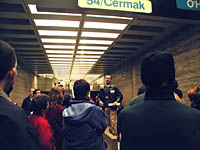 Tour guide Graham Garfield discusses the unity of design and coherent philosophy behind SOM's modern Belmont station, as tour members listen and look on. For a larger view, click here. (Photo by Tony Coppoletta) |
A long ride back downtown and then through to the Forest Park (nee Congress) branch brought the tour to the far West Side and the abandoned Central/Congress station. Participants detrained at the station and were treated to a rare up-close glimpse at a station that had been closed for 30 years and was only seen by most from passing trains. The station was largely as it was when the station closed in 1973, including the original platform, canopy, windbreaks, and agent's booth. After warning tour participants to watch for passing trains and not to venture beyond the agent's booth and off the platform, the tour guides discussed the history and design of the station, its peculiar location isolated from any neighborhoods, and its reasons for closure. After the train went to Forest Park terminal, turned around and returned, the tour re-boarded the train and headed toward their final destination.
The tour last visited Racine/Congress station, another Congress Line station and one more typical of the that line's 1958-built stations. The tour grouped itself on the island platform while the train departed and left the tour to turn around at Morgan Middle Track. At Racine station, the tour guides discussed the design and concept of the station, one built as part of the country's first expressway-median rapid transit line. Note was given to how the station straddles the lanes of the expressway and the environment this creates for waiting passengers. The background of the line was given, including how the Congress Line was created to replace the Garfield Park Line, which was parallel and adjacent to the Congress. To make up for the frequent stations along the old Garfield Line, the Congress Line's planners built half as many stops but gave most stops two entrances at the extreme ends of the station, meaning that the number of entrances were kept constant in number and distance (roughly quarter-mile intervals), giving the impression of not having to walk farther to get to a station. What was obvious, however, were the long ramps that were needed to connect the station entrances on the highway overpasses with the platforms in between. The tour went up to the Racine Avenue entrance to the station and viewed the 1950s station house, with its original building, facade, and agent's booth. The austere design and amenities of the Congress stations in specific and post-World War II transit stations in general -- in part, to meet changing needs, rising costs, and security and safety concerns -- was also discussed.
Following the conclusion of the tour, with the train having returned to the yard participants were directed to take an in-service road train to their next destination and given free access back into the paid area of the station. The tour-takers enjoyed the trip, which provided many unique looks at Chicago rapid transit history.
This year's tour even received press coverage, with a story appearing on page 1 of the Chicago Tribune's Metro section on Monday. Click here to read the story on the Tribune's web site.
Chicago-L.org would like to extend special thanks to the Chicago Transit Authority, Rail Operations management personnel Bruce Nelson for helping to schedule the charter, Rail supervisor Jim Ward and Operator Larry Regalado for helping the trip to go smoothly on the railroad, and all the participating employees who were very cooperative, helpful, and flexible, helping to make the tour the success that it was. Without the CTA's® assistance, little of this would have been possible.
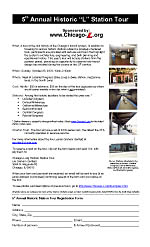 |
2003flyer.pdf
(71k) |
 |
handout03.pdf
(1.1MB) |
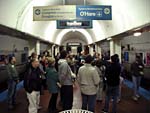 |
tour03@LaSalle01.jpg
(143k) |
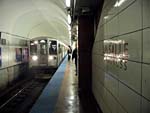 |
tour03@LaSalle02.jpg
(132k) |
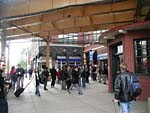 |
tour03@Damen02.jpg
(177k) |
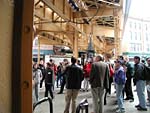 |
tour03@Damen03.jpg
(195k) |
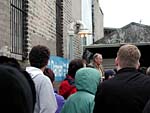 |
tour03@Damen04.jpg
(163k) |
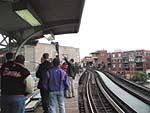 |
tour03@Damen05.jpg
(158k) |
|
|
tour03@California01.jpg
(163k) |
|
|
tour03@California02.jpg
(184k) |
|
|
tour03@California03.jpg
(178k) |
|
|
tour03@California04.jpg
(133k) |
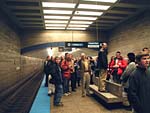 |
tour03@Belmont02.jpg
(169k) |
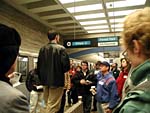 |
tour03@Belmont03.jpg
(161k) |
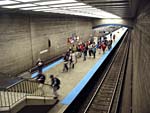 |
tour03@Belmont04.jpg
(177k) |
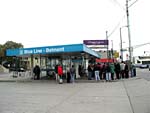 |
tour03@Belmont05.jpg
(132k) |
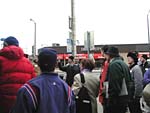 |
tour03@Belmont06.jpg
(114k) |
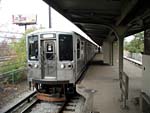 |
tour03@Central02.jpg
(175k) |
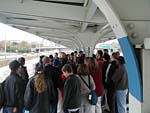 |
tour03@Racine01.jpg
(147k) |
|
|